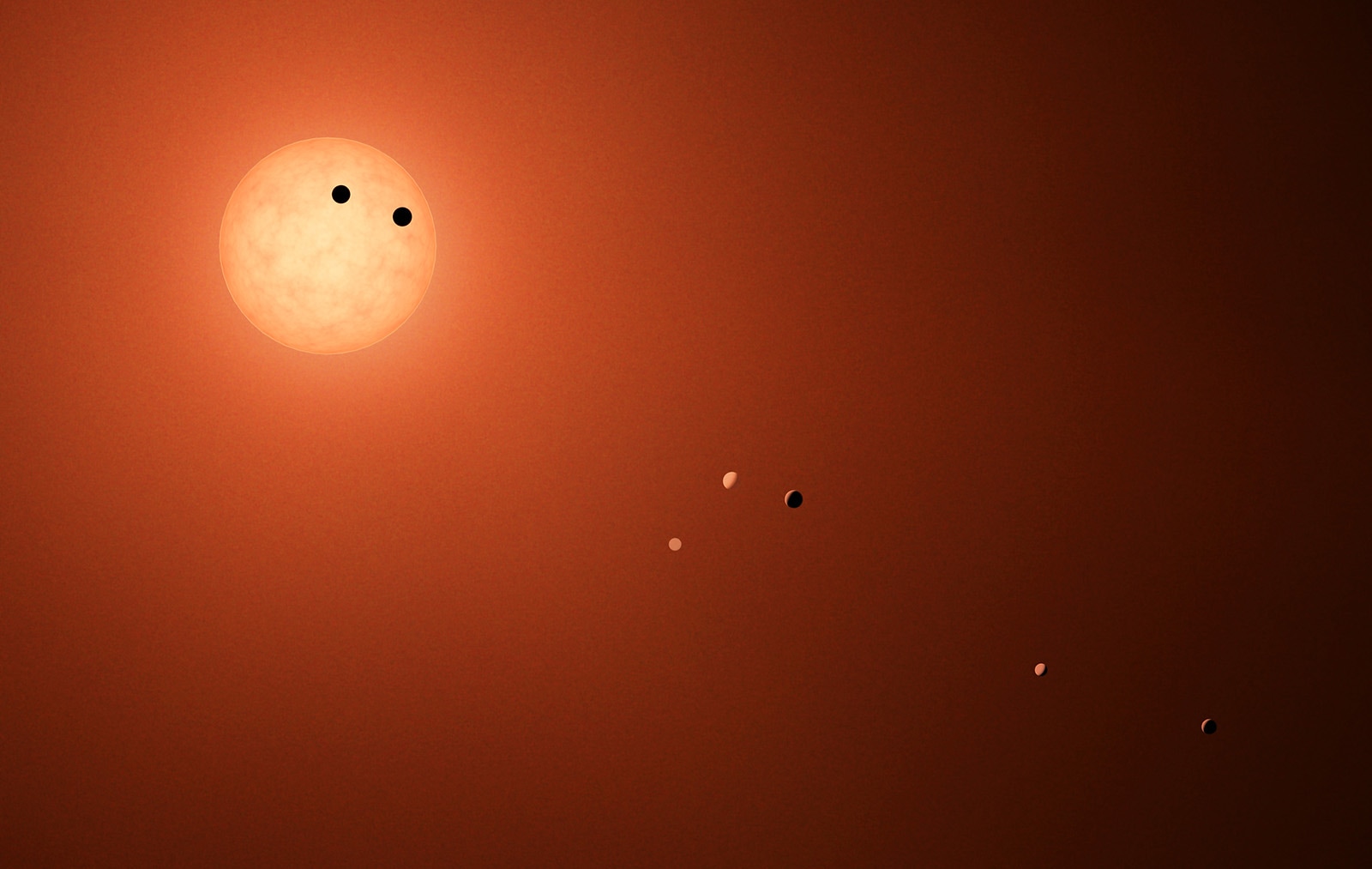 NASA/JPL-Caltech/R. Hurt (IPAC)
NASA/JPL-Caltech/R. Hurt (IPAC)
After its discovery, Trappist-1 instantly became one of the most interesting stars in the Milky Way, with seven Earth-sized planets including three in the life-supporting "habitable zone." But, why did the planets form in such uniform Earth-like sizes so close to their star? Astronomers from the University of Amsterdam believe everything can be explained by small chunks of ice that clustered in the region where water just starts to freeze. Eventually, enough chunks clotted together like plasticine, forming worlds just inside the "ice zone" -- the perfect spot for life.
Because it's such a small star compared to the sun, Trappist-1's exoplanets orbit it very closely. The three potentially habitable worlds, Trappist-1d, 1e and 1f have years varying from just four to nine Earth days. By contrast, Mercury, the closest planet to our sun, completes an orbit in 88 days. (Trappist-1 is a very cool red dwarf star, so it doesn't cook its planets, even though they're much closer to it than the Earth is to the sun.)
There are a few theories about how the exoplanets formed around Trappist-1, which sits a mere 40 light-years from Earth. One is that they condensed in place from an "acretion disk" of rubble around the star, but that would require an unusually dense disk for such a small star. Another idea is that planets formed in a chilly zone far away, and were eventually sucked toward the star by gravity. That idea, however, doesn't account for the very uniform sizes of the seven exoplanets.
The Amsterdam team proposes that the planets actually formed from billions of small pebbles composed mainly of ice. Once they drifted toward the star's "ice line" and started to melt, the water vapor helped them to stick together. Eventually, enough chunks formed into a "proto-planet" and the increasing mass pulled it closer to the star, where it swept up ever-more pebbles until it became a full, Earth-sized planet. That pulled it even closer to Trappist-1, opening room for the next planet to form in the same way.

If accurate, the theory implies that there's a large amount of life-giving water in the Trappist-1 system. All the planets, including the habitable ones, are so close together that you could be standing on one and see clouds or mountain ranges on another, NASA has said. If organisms formed on one world (and that's a big "if"), they could easily be knocked over to another via an asteroid collision.
The discovery of Trappist-1 was a very happy accident for the Amsterdam team. "We have been working on pebble aggregation and sweepup by planets for a long time, and were also developing a new ice-line model," said research lead Chris Ormel. "Thanks to the discovery of Trappist-1, we can compare our model with reality."
They believe that the theory will generate some controversy, as the ideas behind it are fairly new. Next up, they plan to run computer simulations to see how it handles potential early conditions of the young star. "I hope that our model will help answer the question about how unique our own solar system is compared to other planetary systems." They will no doubt compare that with future observations of Trappist-1 once the James Webb Space Telescope launches in 2018.